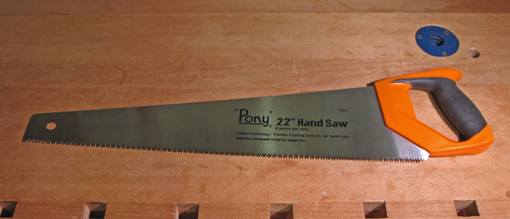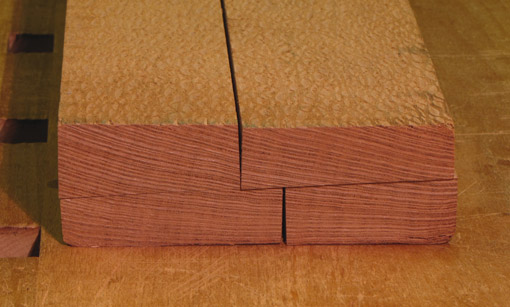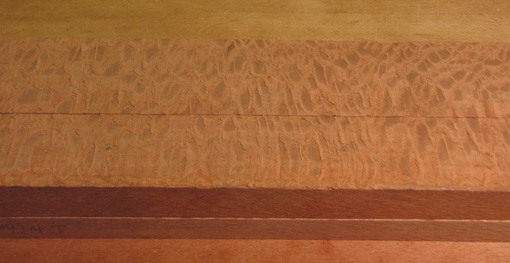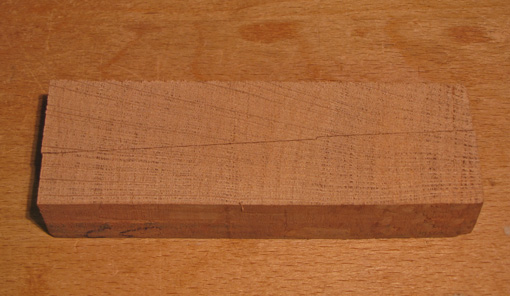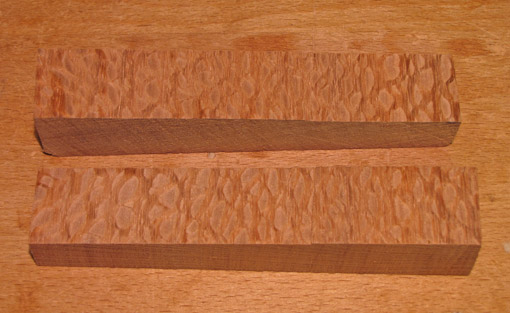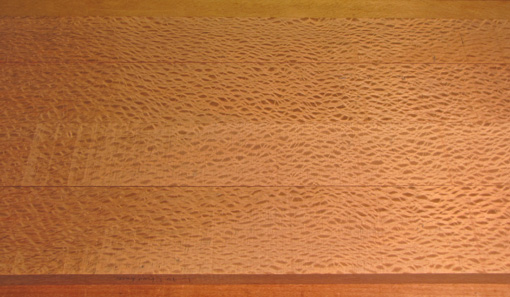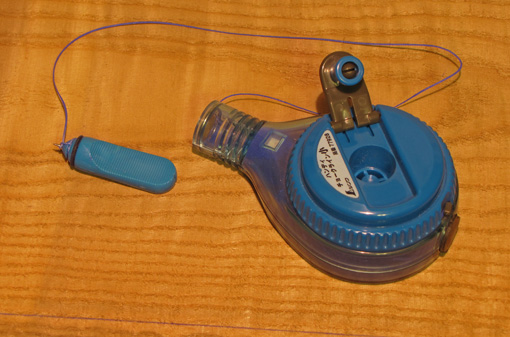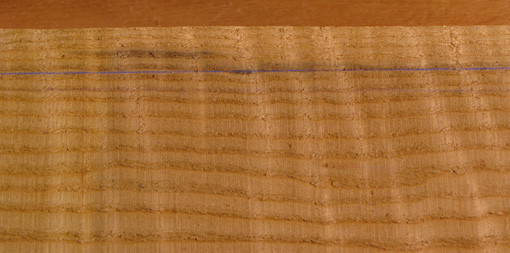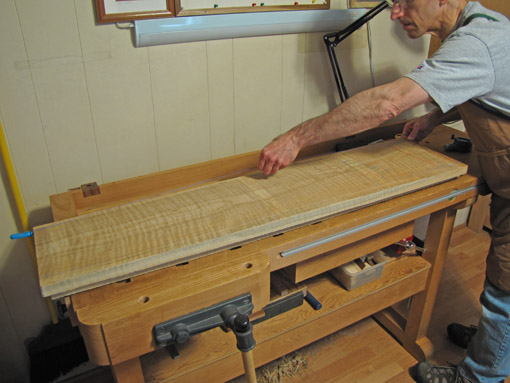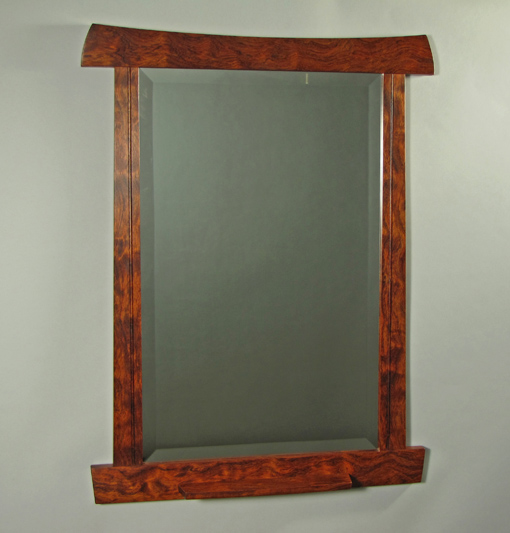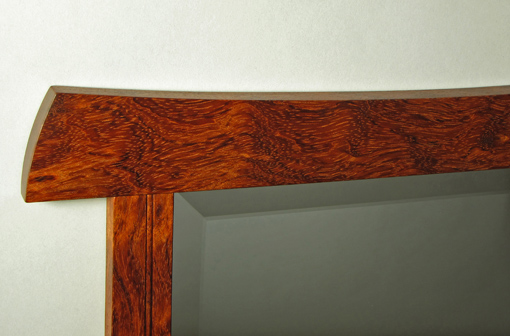Sometimes an inexpensive tool can be designed and made perfectly well enough to do its job.
I wanted a new crosscut saw for breaking down stock, something faster than what I had been using. I found it at my local Woodcraft store: a Pony brand 22″ handsaw, manufacturer’s model #66221, for $15.99. For the inelegant task of rough crosscutting, this tool vastly exceeded my expectations. It cuts like a Tasmanian devil and tracks surprisingly well.
The diamond ground teeth, 8 ppi, each have 3 bevels which make them essentially Japanese cross cut teeth with a negative rake. The induction hardening makes them unable to be sharpened in the shop, so when they dull, no doubt after a very long time, the saw will go to the metal recycling pile. The manufacturer states that the saw cuts on both the push and pull stroke, though the push stroke does most of the work. Not surprisingly, the saw does not rip very well.
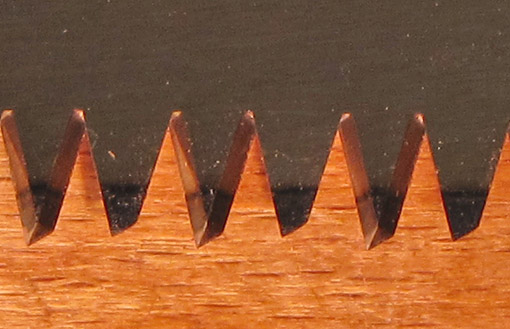
I measured the saw plate, which is straight enough, at 0.040″ with 0.004″ set, each side. The plate is not taper ground (of course, it’s $15.99!) so it is helpful to keep it waxed to avoid pitch build up from some woods and thus slower sawing. The soft-grip handle is adequate, though it tends to lure my hand into a hammer grip rather than a better grip with the index finger extended. The handle acts as a 45/90 square, quick and handy for stock breakdown.
Several times in this blog, I’ve made the case for buying the best quality tools one can afford, going beyond tools that are just “OK.” Yet, I really like this saw because it does its job, which requires more power than finesse, very well and with ease. I think that makes it a good saw even though it lacks certain refinements that I can do without. That leaves more of my woodworking budget to devote elsewhere. Where? Take your pick of great saw makers – Lie-Nielsen, Bad Axe, Wenzloff, Lunn, etc., or what I own several of: Gramercy.
[As with other tool reviews on this blog, this is unsolicited and unpaid.]

